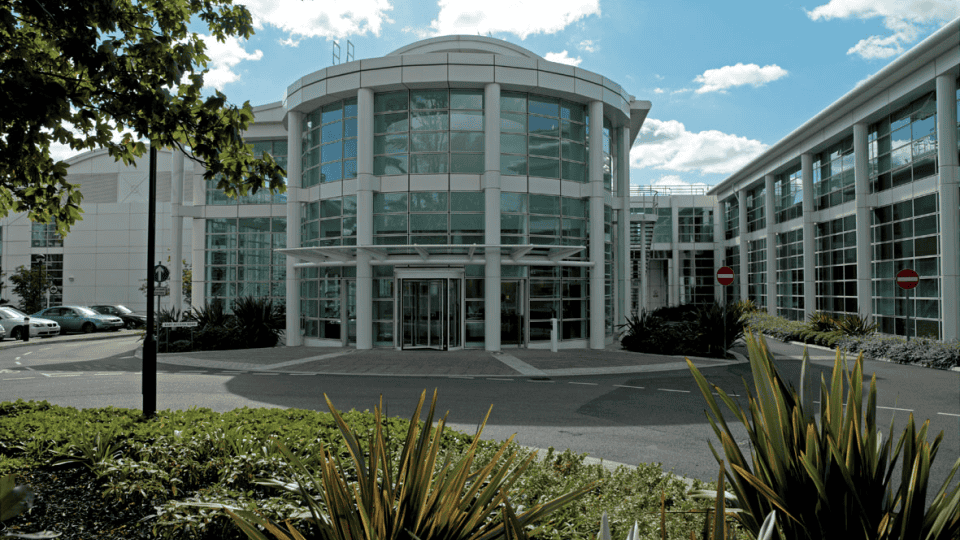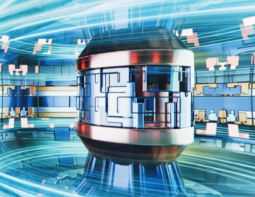Lily Ellis-Gibbings is a higher scientist at the UK’s National Physical Laboratory (NPL). She has developed a wide range of instrumentation in fields as diverse as ion therapy, astrochemistry and ambient ion mass spectrometry. Ellis-Gibbings talks to Hamish Johnston about her passion for building instruments and shares her tips for a successful career in instrumentation

How did you first become interested in working in the field of instrumentation?
When I was in the final year of my bachelor’s degree in Australia I was looking for an undergraduate project and the one I chose involved studying atomic and molecular collisions. This meant working with homemade vacuum equipment and instrumentation, which I really liked. I discovered that I really enjoy doing experiments that take an incredibly complicated physical system and break it down into smaller and smaller pieces – until your measurements reveal something fundamental about the system you are studying.
After I graduated, a friend and I went on a road trip to visit universities and chat with potential PhD supervisors. However, I couldn’t find a good fit, so I worked for a few years as a science communication officer.
That was a really great experience, but after a while I was looking for something more scientific and a little more challenging. The professor that I did the undergraduate project with had a colleague in Spain who was looking for someone to do a PhD in a similar field. So I was very lucky to be in the right place at the right time – and to have some experience in vacuum instrumentation.
Your PhD at the Autonomous University of Madrid involved the development of new ion sources for radiotherapy. What was the goal of that research?
The focus was on ion therapy, which is a type of cancer treatment that uses a high-energy beam of protons, or perhaps carbon ions, to destroy a tumour within the body. Ions are particularly good at this application, because, due to an effect called the Bragg peak, the beam can be adjusted to deposit most of its energy in the tumour – minimising damage to the healthy tissue that it must pass through to reach the tumour.
It turns out that it’s not just the high-energy ions that affect the tumour. Ion collisions create a cascade of lower energy particles such as electrons and free radicals. These can affect tumour cells in lots of different ways – sometimes even killing the cells.
We were trying to develop ion sources that could mimic the secondary particles created when an ion beam interacts with molecules in the body. In particular, we were interested in how these ions interact with DNA, proteins and other complex molecules. This builds more complex computer models of ion therapy, whereas many conventional models use a body that is modelled as being 100% water.
After you completed your PhD, you worked in experimental astrochemistry at University College London, that must have been a fascinating field to be involved with.
Yes, astrochemistry is a super fun field and I really enjoyed it. It is the study of the chemistry that occurs in different parts of space. Although it sounds very different to my work in radiotherapy, there were similarities in terms of the instrumentation that we used – specifically ion and electron beams in vacuum systems. We focused on how these beams interacted with molecules of astrochemical interest. For example, if a molecule is detected in the ionosphere of Saturn’s moon Titan we could study how that molecule could break down in that environment and form new bonds. Could it turn into singly charged or a doubly charged ion?
Have you studied molecules that may be involved in the emergence of life?
That is certainly something we were interested in. Abiogenesis, the process by which life emerged from non-living matter, is an important topic in astrochemistry. Indeed, one of the reasons we would choose certain molecules to investigate is their possible roles in the emergence of life. For example, I would work with molecules that have carbon–nitrogen bonds because these bonds are really important in how we believe life first appeared on Earth.
That sounds like an exciting field, did you enjoy it?
It was fun and I definitely learned a lot. The astronomy conferences were fascinating and I loved seeing the amazing images that were created from telescope data. The overlap between people doing astrochemistry and the observational astronomers was fairly small. But, we did interact a lot with a lot of physicists who model what the concentrations of different atoms in different parts of the universe should be. It was fascinating speaking with them.

You joined NPL in 2021, where you are a higher scientist. What does your job entail?
I joined the National Centre of Excellence in Mass Spectrometry Imaging (NiCE-MSI) at NPL in Teddington, London. We mostly work on the chemical imaging of surfaces and a lot of what we do is focused on biology. The measurements that we make are different from what I did before, but again, the instrumentation is similar.
In mass spectrometry imaging we use many different ion sources, some of which operate at high vacuum. But, the really cool thing that I am doing at the moment is the development of ambient ion sources. Conventional mass spectrometry imaging involves ionizing samples under vacuum conditions, often with a lot of sample preparation. However, some components or types of samples – particularly in delicate or unusual biological samples – cannot be studied fully in this way.
Our group ensures that mass spectrometry techniques are quantifiable and repeatable
To address this problem, I’m developing ambient ionization techniques that allow us to do mass spectrometry on samples in air with no sample preparation. I particularly enjoy working with unusual sample types such as plant matter. It’s interesting work and there are always new challenges.
NPL is very involved in developing measurement standards, so our group ensures that mass spectrometry techniques are quantifiable and repeatable. It is important that we maintain our high level of scientific integrity that we have within the metrology (measurement science) community.
Do you work with researchers outside of NPL?
Yes, we have extensive collaborations across the UK. We recently partnered with Cancer Research UK on a project called Rosetta, which involves using mass spectrometry imaging to map cancer biology. We also collaborate with the Rosalind Franklin Institute in this field and we partner with researchers based at universities around the UK. We contribute our experimental expertise to these projects and we are also involved in analysing data gathered by the collaborations.
NPL also takes part in collaborations with other metrology institutes around the world, including the National Institute of Standards and Technology (NIST) in the US.
What advice do you have for a physics PhD student who would like a career in instrumentation?
Try to spend as much time in the lab as you can. Fix things that are broken, with the appropriate guidance. Work-out how the electronic equipment in your lab works and be hands-on when it comes to tasks like putting together a vacuum system. It’s also important that you learn how to use computer-aided design (CAD) software and understand machine engineering basics – this will allow you to design, commission and build your own equipment.
One thing that I found very useful, is learning how to assemble and disassemble delicate equipment using tiny tools while wearing gloves. Through hours of practice, I taught myself not to be clumsy and to organize parts and tools so I don’t lose them.
One thing that is important to realize is that building instrumentation as an academic scientist can be risky. If you work on a project that fails to deliver data and publications, it can be very difficult when applying for the next job or fellowship. It’s always good to have a side project that trundles along and also produces data – so you always have something you can publish.
What about a career outside of academia?
Scientific institutes, like us at NPL, often mix academic, commercial and measurement services. There are also lots of companies that produce scientific instrumentation and they employ some really amazing scientists. So, that is an excellent career path.



